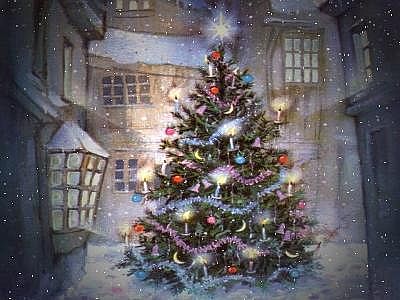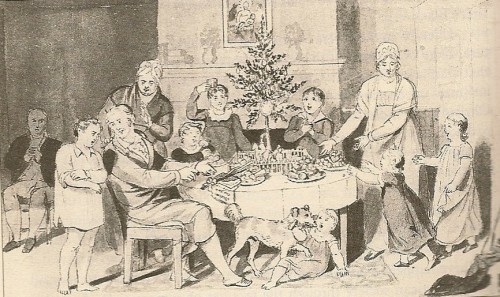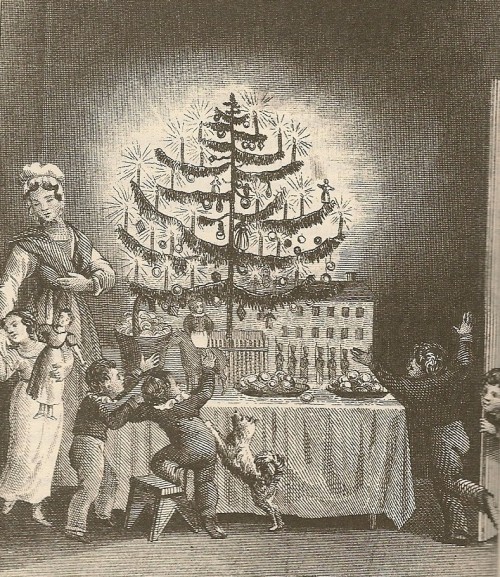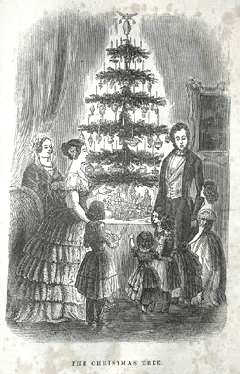How did a captain’s wife who lived at sea, keep up with the latest fashions?
On land, a captain’s wife would most likely have hired a seamstress to make her wardrobe. But, while at sea, she would have to do the sewing for herself, her children and her husband, and usually made sure there was sufficient fabric to keep her family well-clothed while at sea for an average of three years. To keep up with fashion trends she was dependent on other captains’ wives who had recently left their home port, had been in a civilized port, and/or acquired a recent copy of fashion periodicals such as Peterson’s or Godey’s Lady’s Book.
Fashion during the 1840’s: The fashion silhouette of the 1840’s was a period of transition: daytime dresses of the 1830’s (pictured above) with lower waistlines, wide sleeves, and full skirts became more subdued during the 1840’s. By then, dresses were primarily one-piece with waistlines ending at the natural waist and came to a point at the front and closed with hooks, buttons, or laces down the front or back. By the 1840’s, fuller sleeves of the 1830’s transitioned to narrower, more closely fitted sleeves set low, off the shoulder. Although there were sleeve variations; such a bishop sleeve, sleeve en bouffant (alternating fabric of tightness and puffed), tight sleeves with decorative frills above the elbow, short oversleeves, or epaulettes at the shoulder. Additionally, early in the 1840’s, although sleeves were fitted at the shoulder, they widened half way between the elbow and wrist into a funnel or bell-shape. Full skirts were gathered at the waist and might include edging of braid along the skirt hems, or have pockets sewn into skirts which could be reached through slits in the skirt. Skirt trimmings included ruchings (pleated or gathered strips of fabric), flounces, scallops, and cordings. Below are two examples of dresses from the 1840’s.
 Hairstyles: Hair was parted in the middle and pulled smoothly to the temples where it was arranged in hanging sausage-shaped curls or in plaits, or with a loop of hair encircling the ears. At the back, hair was pulled into a bun or chignon.
Hairstyles: Hair was parted in the middle and pulled smoothly to the temples where it was arranged in hanging sausage-shaped curls or in plaits, or with a loop of hair encircling the ears. At the back, hair was pulled into a bun or chignon.

















